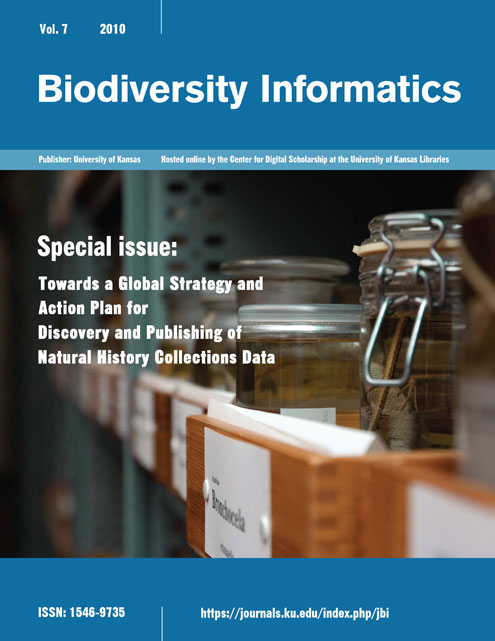Thoughts on implementation of the recommendations of the GBIF Task Group on a Global Strategy and Action Plan for Mobilisation of Natural History Collections Data
DOI:
https://doi.org/10.17161/bi.v7i2.4019Keywords:
Global Biodiversity Information Facility (GBIF), Natural History Collections, Discovery, Digitisation, Publishing, Primary Biodiversity DataAbstract
The Global Biodiversity Information Facility (GBIF) has a mandate to facilitate free and open access to primary biodiversity data worldwide. This Special Issue of Biodiversity Informatics publishes the findings of the recent GBIF Task Group on a Global Strategy and Action Plan for Mobilisation of Natural History Collections Data (GSAP-NHC). The GSAP-NHC Task Group has made three primary recommendations dealing with discovery, capture, and publishing of natural history collections data. This overview article provides insight on various activities initiated by GBIF to date to assist with an early uptake and implementation of these recommendations. It calls for proactive participation by all relevant players and stakeholder communities. Given recent technological progress and growing recognition and attention to biodiversity science worldwide, we think rapid progress in discovery, publishing and access to large volumes of useful collection data can be achieved for the immediate benefit of science and society.Metrics
File downloads
1,199
Downloads
Downloads
Published
2010-10-09
Issue
Section
Articles (peer-reviewed)
License
Copyright for articles published in this journal is retained by the authors, with first publication rights granted to the journal. All articles are licensed under a Creative Commons Attribution Non-Commercial license.
Competing Interests: The authors have declared that no competing interests exist.
How to Cite
King, Nicholas, Leonard Krishtalka, and Vishwas Chavan. 2010. “Thoughts on Implementation of the Recommendations of the GBIF Task Group on a Global Strategy and Action Plan for Mobilisation of Natural History Collections Data”. Biodiversity Informatics 7 (2). https://doi.org/10.17161/bi.v7i2.4019.

